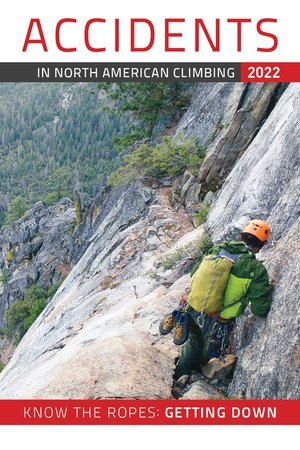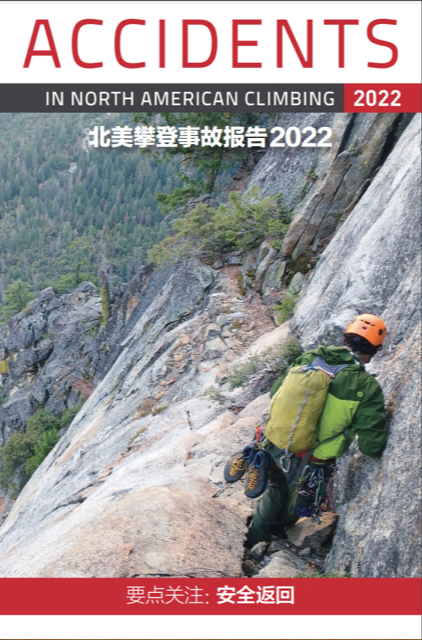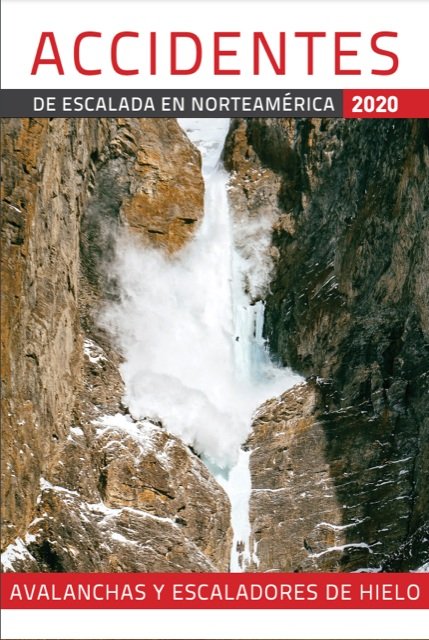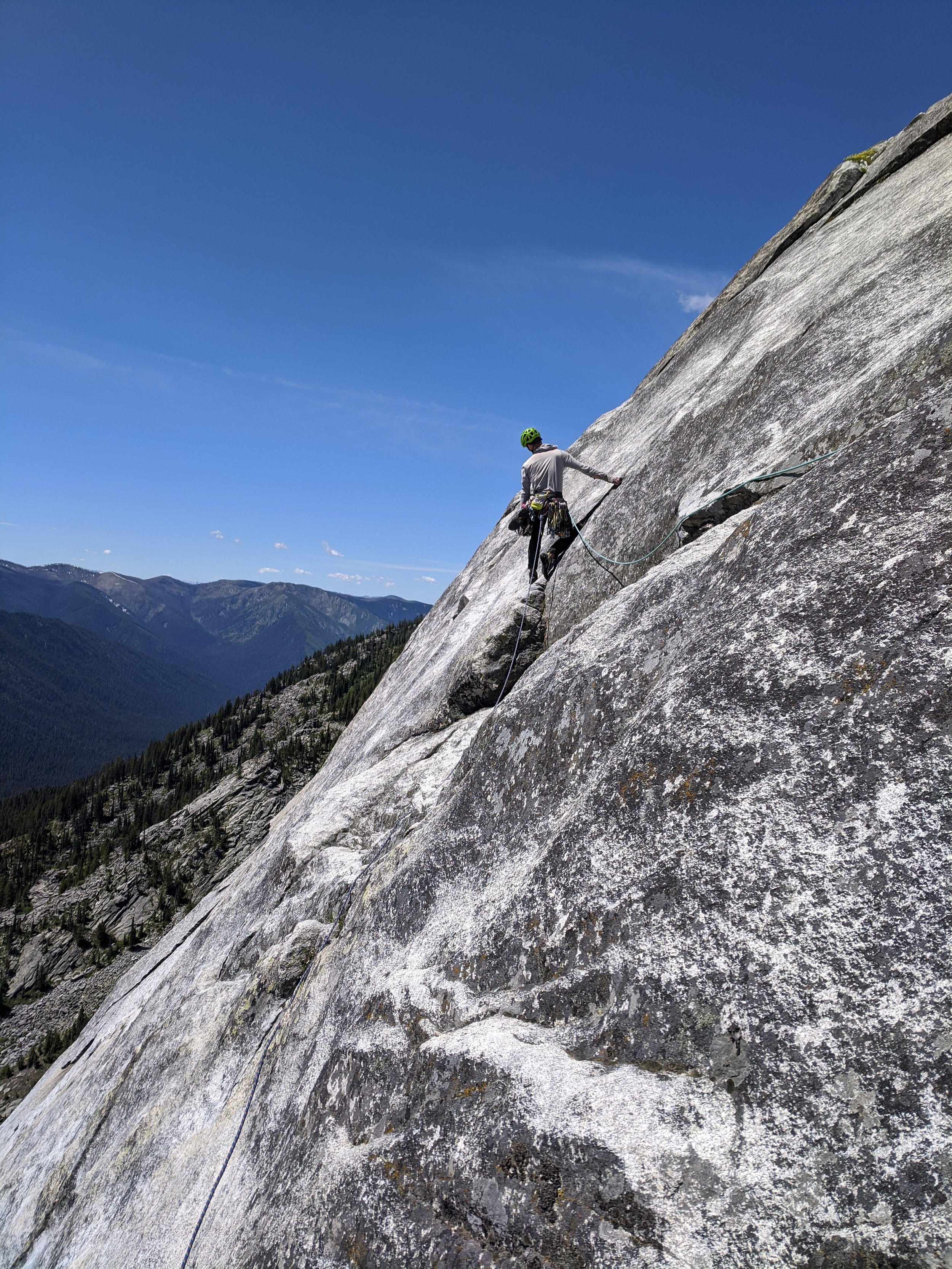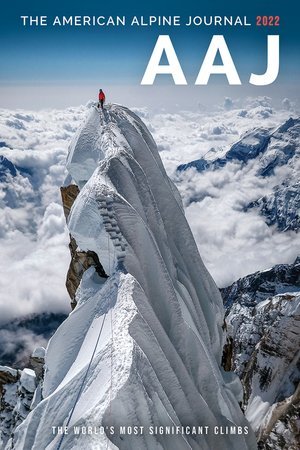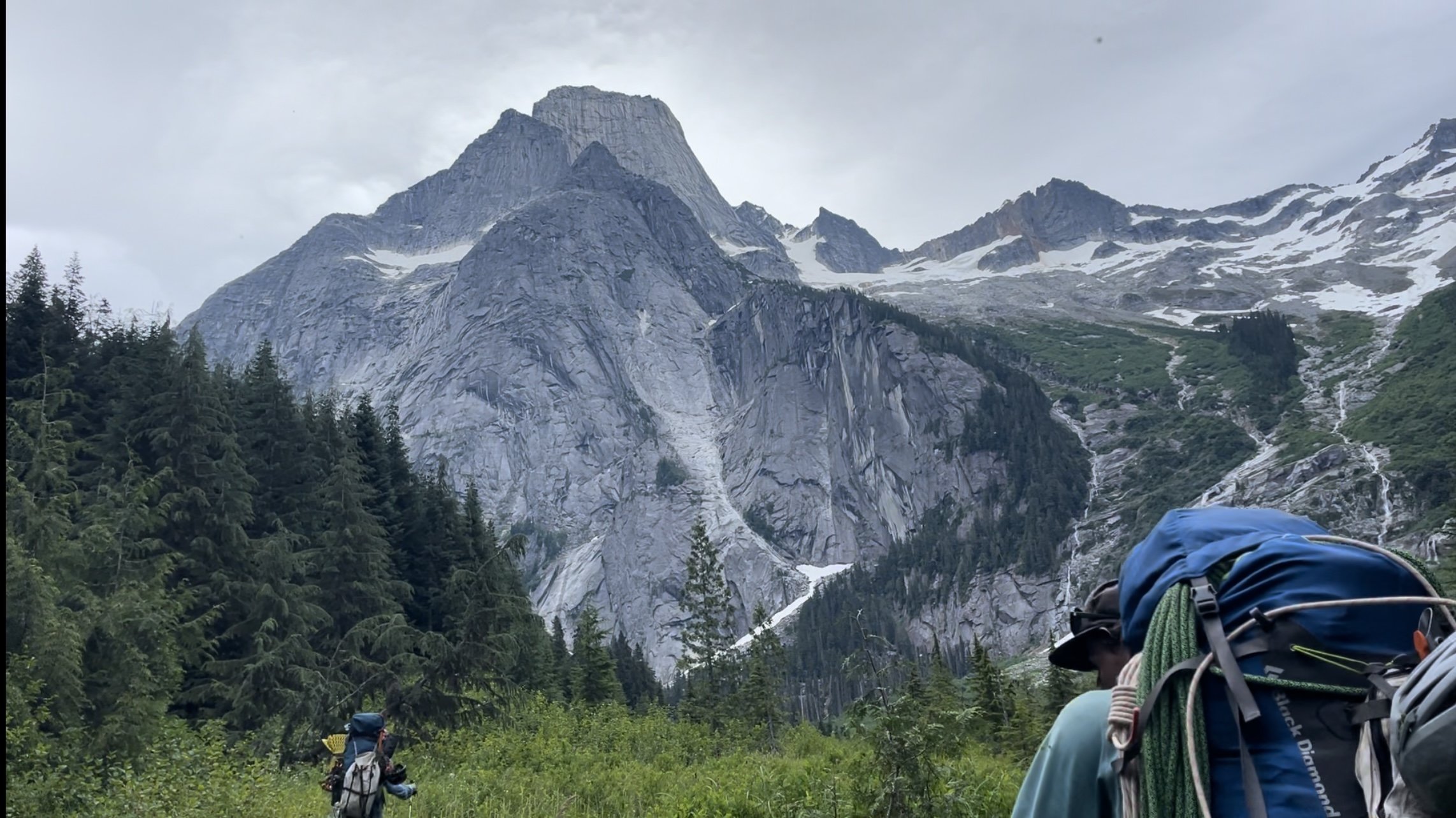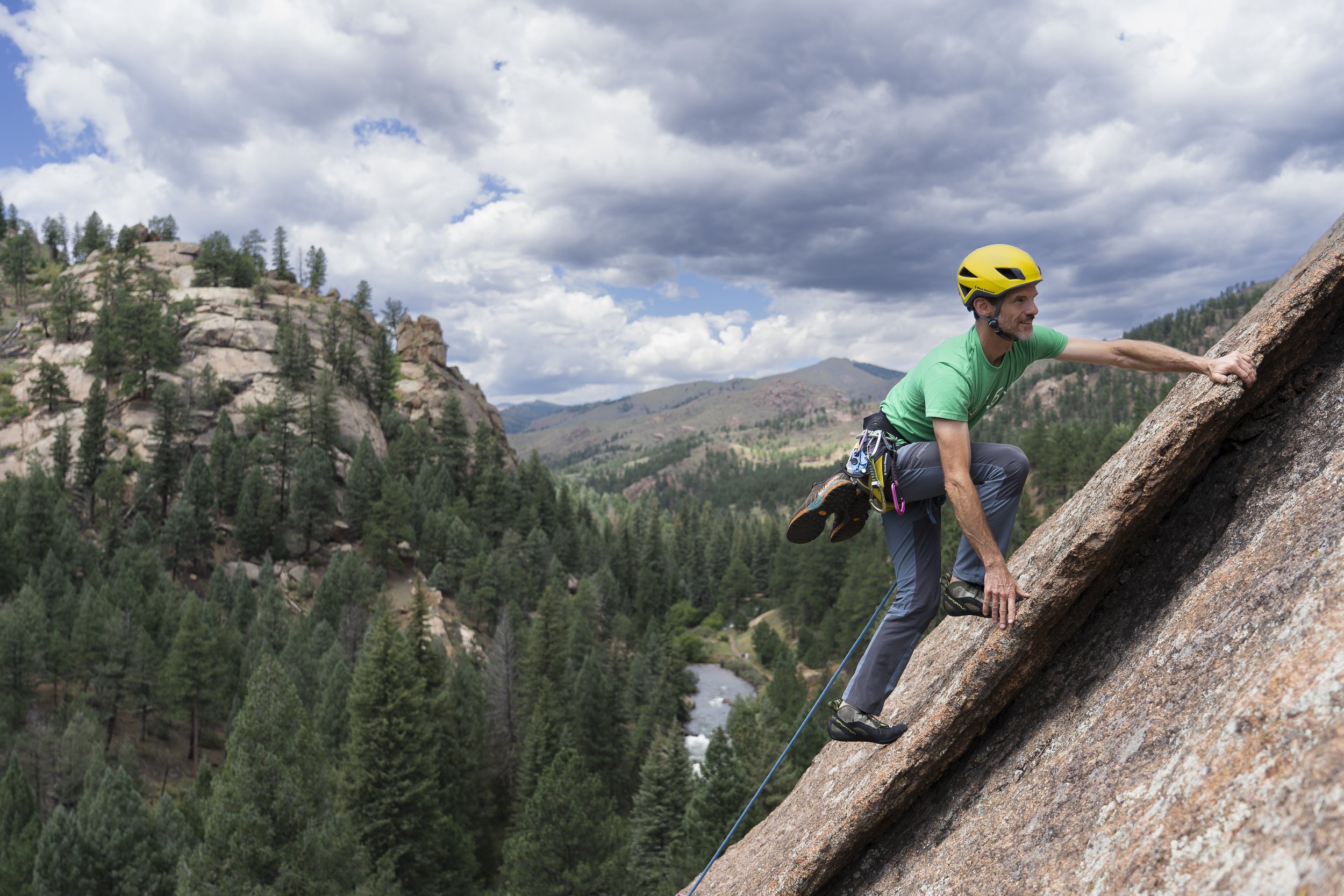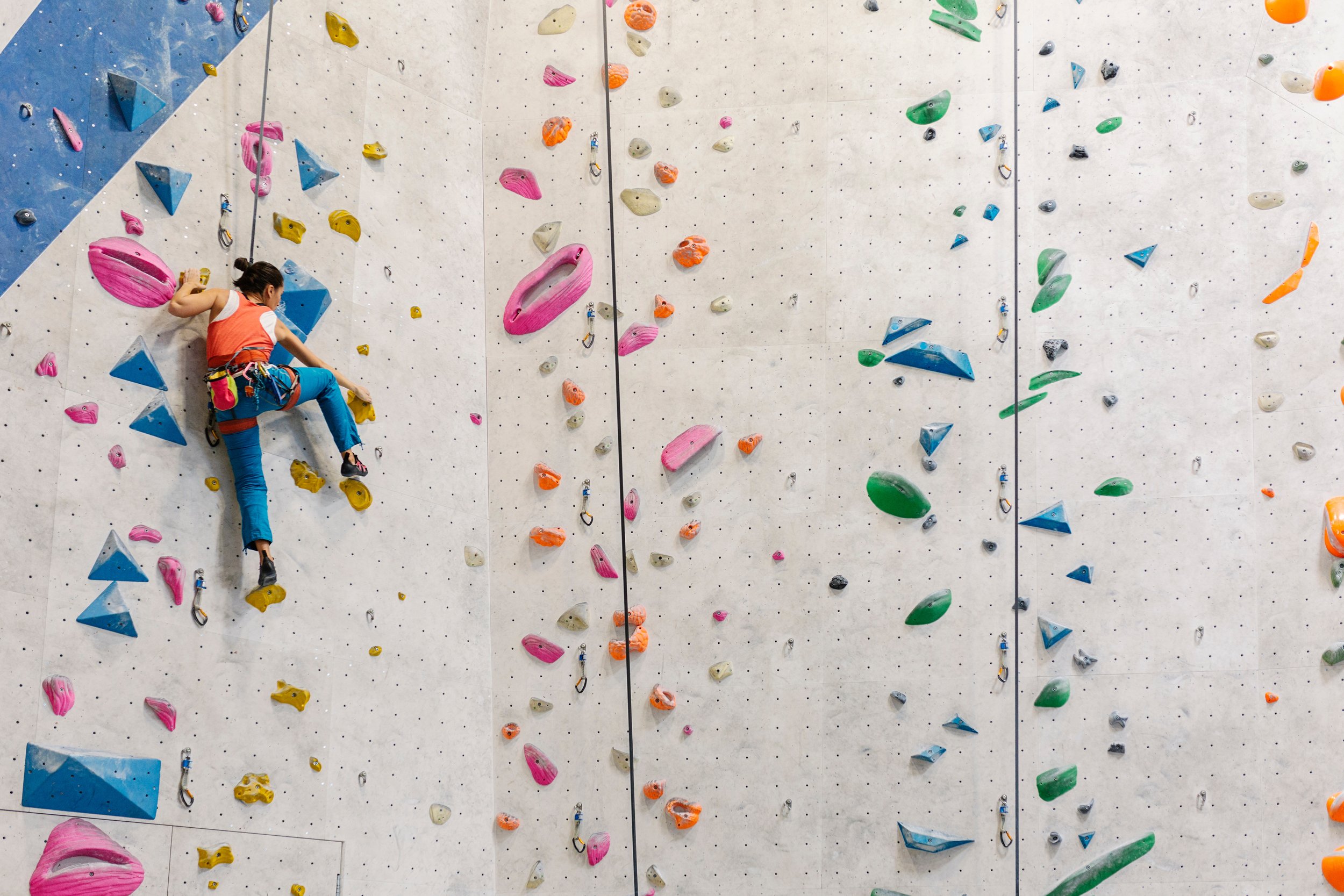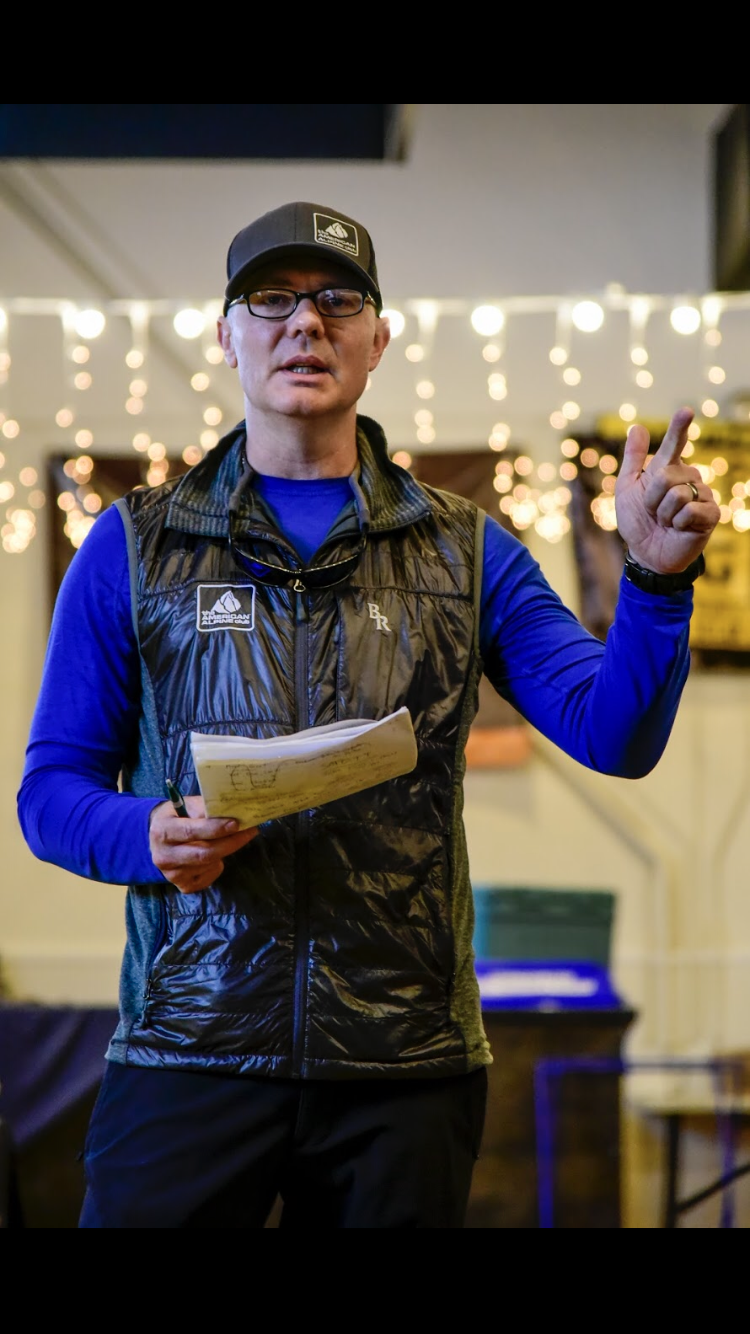The following story describes a top-rope solo accident from 2021. The report arrived too late to include in the 2022 Accidents book. Unfortunately, this type of mishap has become more common as many choose the efficiency of partner-free ascent for much of their outdoor climbing.
Device Disengaged from Rope
Snowshed Wall, Donner Summit, California
Snowshed Wall. A rappelling climber is visible near the same place that Dozier fell. PC: Ryan Dozier
On June 7, 2021, Ryan Dozier (37) was top-rope soloing at Snowshed Wall at Donner Summit, near Lake Tahoe. Near the top, he fell, plummeting 50 feet before his system caught his fall. Ryan picks up the story from here.
On that day, “I completed four different climbs using a rig that I have frequently used over the past 10 years. I usually fix two strands of a dynamic rope at the anchor. I attach a Petzl Micro Traxion to one strand and weight it at the bottom. I use a Trango Cinch assisted-braking device on the other, unweighted strand. I attach both devices to my harness belay loop via locking carabiners.
Dozier’s ropes on Crack Of The Eighties. He top-roped the route with one hang a year after his accident. PC: Ryan Dozier
“By early afternoon, most people had left the crag due to the breezy conditions. I moved my ropes to the anchor of Crack of the Eighties (5.13a) and weighted one line at the bottom with a rope bag stuffed with the remainder of the strand. This was a difficult route I had climbed many times over the years. I decided to modify my soloing setup by only using the one strand of rope and the Micro Traxion. I decided to do this because it was windy and I was worried my unweighted rappel strand would get blown around the corner. I also did not want to pull slack through the Cinch. This was also my last climb, and I wanted to get it done and head home. This was the first time I have ever soloed with just one device.
“I fell three times on the first three quarters of the route, and the device engaged each time. Several feet below the anchor, I was in a difficult layback with high feet and I remember looking down at the Micro Traxion and thinking something seemed off. The device and carabiner were a little twisted, and I took one hand off the rock to straighten it out.
Dozier being treated in the same ER where he formerly worked. PC: Ryan Dozier
“Before I could touch [the device], a foot popped and I began a 50-foot free fall, acutely aware that the cam was not biting the rope. In an attempt to slow myself down, I grabbed the rope with both hands and sustained deep rope burns to eight fingers and both palms. This action probably kept me upright. While the route is vertical to slightly overhanging and mostly devoid of features, my left foot impacted a protrusion just before I hit the ground. This impact caused my torso to crunch, and when this happened, the Micro Traxion miraculously engaged on the rope and arrested my fall. My feet were three feet above the ground. I was not wearing a helmet.
“Two friends happened to be nearby and witnessed the fall. I’m an ER trauma nurse and former EMT. This background was invaluable in rapidly assessing injury and determining the safest plan of action. I immediately put my leather belay gloves on my damaged hands so that I could use them. I checked my head, neck, chest, and other extremities for pain. Finding none, I knew my main injury was my left ankle dislocation. I had no feeling in the foot and knew that I couldn’t waste time. I used a prusik to unweight the Micro Traxion, lowered to the ground on a Grigri, and immediately retrieved painkillers from my first-aid kit. Calling 911 was discussed and we decided to self-rescue rather than wait for EMS. My fixed line helped me lower down the short but steep approach trail, and my two friends helped me hop across the creek and reach the road. They drove me to the ER, where my leg was realigned. I underwent surgery about a week later. My left foot had sustained a sub-talar dislocation and fractures to four different bones. I have since returned to rock climbing at nearly the level I had been, thanks to a copious amount of physical and mental therapy.”
ANALYSIS
“I can’t find any recorded accounts of this type of accident, but I have heard that it has happened before. It is common at climbing areas around the world to use a single Micro Traxion for toprope soloing.* This is an ‘off-label’ use of the device. There are no documented reports of its failure to engage during dynamic loading, although I have heard some campfire talk about it happening. I believe that while climbing, the device was squeezed in my lap in just the right way to lock the device open. It then re-engaged when my foot slammed into the cliff.
“The Micro Traxion had no visible damage. The rope had no apparent damage. I’ve had many conversations with friends in rope access and SAR. The best we can figure is that, besides causing my torso to crunch and re-engage the Micro Traxion, the impact of my foot caused me to slow down enough to minimize the impact on the rope. A more dynamic load onto a toothed cam would likely have core shot, if not severed, the line.
“I made choices that day to modify my time-tested solo rig for many reasons—the Micro Traxion had never failed to engage in the past, it was windy, I was anxious to go home, and I didn’t want to have to pull slack through the backup device. None of those were good reasons, but at the time I convinced myself they were. If I had not remained upright, I would have certainly sustained a head injury. There is no good reason not to wear a helmet. If my foot had not hit the rare protrusion on this section of the cliff, I would have had a ground fall and been gravely injured or killed. In a redundant rigging system, this accident would likely not have happened.” (Source: Ryan Dozier.)
*Editor’s Note: Most climbers (the ANAC editor included) use a variety of top-rope solo systems that incorporate elastic cord, surgical tubing, or even a headlamp strap to keep the primary device upright and taut. This maintains the device’s orientation in some configurations, and keeps it separated from a backup device.
Join the Club—United We Climb.
Get Accidents Sent to You Annually
Partner-level members receive the Accidents in North American Climbing book every year. Detailing the most noteworthy climbing and skiing accidents each year, climbers, rangers, rescue professionals, and editors analyze what went wrong, so you can learn from others’ mistakes.
Rescue & Medical Expense Coverage
Climbing can be a risky pursuit, but one worth the price of admission. Partner-level members receive $7,500 in rescue services and $5,000 in emergency medical expense coverage. Looking for deeper coverage? Sign up for the Leader level and receive $300k in rescue services.
More Analysis Of Top-Rope Device Malfunction
Big-wall climber and climbing instructor Yann Camus’ rope grab video provides some in-depth analysis of top-rope solo devices. The bottom line: Use a backup!
In another video, Camus examines more devices used by top-rope soloists. Along the way, he debunks some myths.
Different Devices, Similar Outcomes
Top-rope solo mishaps seem to be on the rise. From 2019 through 2021, four accidents involving other “off label” uses of devices on single ropes were reported in Accidents in North American Climbing. Two are below.
Montezuma, Colorado
On the morning of September 19, 2021, Craig Faulhaber (41) fell to the ground while top-rope soloing Burning Down the Haus (5.13d). Faulhaber, a climber with 12 years of experience, set up his system using a single strand of 9.5mm dynamic rope. He fixed the rope and descended using a Petzl Grigri. For a self-belay, he switched to a Petzl Shunt attached to his harness’ belay loop with a locking, anti-cross-loading carabiner…
Vedauwoo, Wyoming
On August 20, 2019, a 26-year-old male drove to Vedauwoo, Wyoming for some after-work top-rope soloing. He set up a fixed line on To the Moon (5.10b/V0), a 35-foot crack with a bolted anchor. He used a Kong Duck mini-ascender with a paracord sling around his neck to keep the device high, prevent it from weighting the rope dynamically, and to keep it separate from a backup Petzl Micro Traxion…
ANAC Translations
As we announced last month, the 2022 Accidents in North American Climbing has been translated into Chinese. Earlier, a crew of volunteers translated the 2020 Accidents in North American Climbing into Spanish. Click the links below for more information and download the PDFs.




